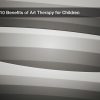
Art is famously abstract and difficult to define, as it is a work of human creativity and will vary from one person or culture to another. Art can take may forms, from dances and clothing to painting, sculpture, music, and performance arts such as theater. Some of the most popular types of art today are paintings, sketches, and photographs; that is, art that can be framed and hung on a wall somewhere. Plenty of museums, galleries, and private collections feature art like this, and someone visiting a city may want to also visit the local art museums for a taste of local art. A gallery in Miami, for example, may feature a lot of Latin American art, and other museums may emphasize African American art. Meanwhile, art also plays a major role in the public sphere, and many hotels, doctor’s offices, libraries, workspaces, and more will feature art, too. The benefits of art in the workplace are many, and art for senior living spaces or art for retirement communities can cheer up the residents there. An art consultation for hotels may help a hotel feel more homely, and art consultation for hotels is a big business today.
The Business and Science of Art
Art is more than a pretty picture. Today, art supports a sizeable business around the world, and many private collectors own collections with several hundred pieces of art each. In particular, most of these collections feature paintings, and around 40% of those collections feature pieces of art created by American artists. In the United States, meanwhile, over 100,000 nonprofit organizations employ over one million artists all across the nation, and many up-and-coming artists may work through these organizations to get their work displayed in the public for the first time.
Art also plays a major role in the mental health of anyone who views it, and studies have confirmed this. Art, to put it simply, can lower stress levels and make viewers feel at ease. Back in 2011, the University of London conduct a study on this topic, and found that blood flow to the “joy response” part of the brain increased 10% when viewing a beautiful painting. Meanwhile, a separate study asked museum guests to visit a museum for at least 35 minutes and report their stress levels at the start and end of their visit. Many of these study participants reported that they felt more relaxed and at ease after viewing art, and they even had lower levels of cortisol after their museum trip. Cortisol, for those not aware, is the stress hormone. Viewing art can actually have a biological impact on viewers, and business managers and hotel owners want to take advantage of this. Thus, art consultation for hotels is a sizeable business today, and art consultants may find work choosing art for a public sphere.
Art for the Public
Naturally, museum or gallery is a great way to view many local artists’ work, but the public sphere has its own share of art to offer, such as art consultation for hotels. A hotel is designed to feel and appear homely and warm to guests, and this reflects in the lighting, wallpaper, furniture, and yes, wall-mounted art. The actual pieces will be chosen by an expert art consultant, who may select and set up pieces that fit the premise’s visual theme and mood (and possibly the region’s ethnic makeup, too). In fact, art consultation for hotels is a fine way for local artists to get their works in the public for the first time, and painters, sketchers, and photographers may launch their art careers this way.
The same is true for libraries or doctor’s offices, or any other public area that involves a quiet room where people will wait or work. Art can help soothe the nerves of any guest and help them concentrate. And in the office, attractive pieces of art can actually boost the creativity and motivation of the employees who see it, according to studies on the topic. A creative work environment comes from attractive art pieces, innovative layouts of desks and chairs, and potted plants. Here again, local artists may get some recognition when their pieces are chosen to appear in an office space.


